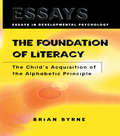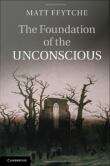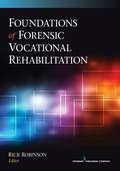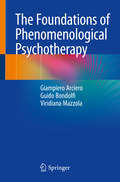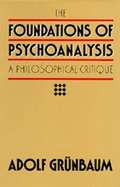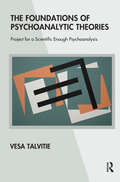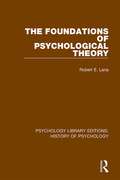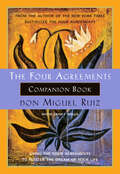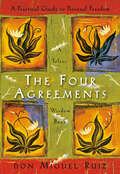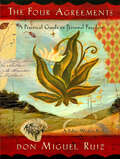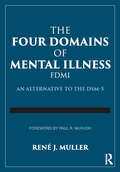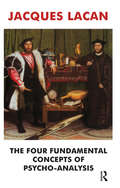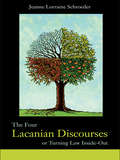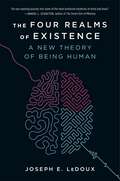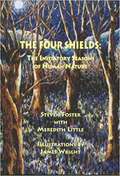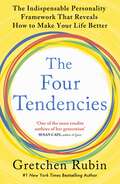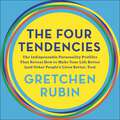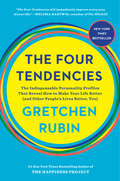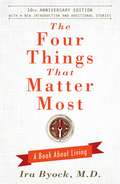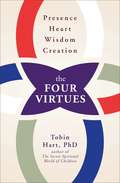- Table View
- List View
The Foundation of Literacy: The Child's Acquisition of the Alphabetic Principle (Essays in Developmental Psychology)
by Brian ByrneThis monograph brings together important research that the author and his colleagues at the University of New England have been conducting into the early stages of reading development, and makes a valuable contribution to the debate about literacy education. It should appeal to a broad audience since it is written in an entertaining and accessible style, with chapter summaries, and where appropriate short tutorials in relevant topics, in particular Learnability Theory (Chapter 1), levels of language structure (Chapter 2) and writing systems (Chapter 2).It will be of interest to experimental psychologists concerned with the reading process, developmental psychologists interested in cognitive growth, educational psychologists interested in the application of experimental methods in the classroom situation, and teachers and teacher educators.
The Foundation of Positive Psychology: A Compilation of Key Studies, Theory, and Practice
by Jolanta BurkeThe Foundation of Positive Psychology: A Compilation of Key Studies, Theory, and Practice is a milestone text which serves as a comprehensive handbook for positive psychology. It offers a compilation of over 200 seminal papers that provide a balanced overview of the nature, origins, and evolution of the discipline. Across five chapters, readers will embark on a journey, delving into pivotal studies, theories, and practical applications that have moulded this dynamic field, exploring the promotion of positive psychology across various disciplines.Every introduced publication in the book follows a consistent structure: providing a summary of key findings, an exploration of the paper’s significance, and an examination of the practical implications and applications for professionals. The narrative goes beyond merely spotlighting cornerstone papers; it also traces the evolutionary path of contemporary ideas. Moreover, it confronts present tensions, lingering enquiries, and inherent limitations within positive psychological research while simultaneously envisioning hopeful pathways for further development.It is essential background reading for researchers and practitioners in positive psychology, coaching, counselling, and social work, as well as students in various areas of psychology, counselling, education, healthcare, and related fields.
The Foundation of the Unconscious
by Matt FfytcheThe unconscious, cornerstone of psychoanalysis, was a key twentieth-century concept and retains an enormous influence on psychological and cultural theory. Yet there is a surprising lack of investigation into its roots in the critical philosophy and Romantic psychology of the early nineteenth century, long before Freud. Why did the unconscious emerge as such a powerful idea? And why at that point? This interdisciplinary study breaks new ground in tracing the emergence of the unconscious through the work of philosopher Friedrich Schelling, examining his association with Romantic psychologists, anthropologists and theorists of nature. It sets out the beginnings of a neglected tradition of the unconscious psyche and proposes a compelling new argument: that the unconscious develops from the modern need to theorise individual independence. The book assesses the impact of this tradition on psychoanalysis itself, re-reading Freud's The Interpretation of Dreams in the light of broader post-Enlightenment attempts to theorise individuality.
The Foundations Of Common Sense: A PSYCHOLOGICAL PREFACE TO THE PROBLEMS OF KNOWLEDGE (International Library Of Psychology Ser.)
by Isaacs, NathanFirst Published in 1999. Routledge is an imprint of Taylor & Francis, an informa company.
The Foundations Of Forensic Vocational Rehabilitation
by Rick RobinsonThis is the first fundamental text to focus specifically on forensic vocational rehabilitation, a field that is forecast to grow rapidly. Forensic vocational rehabilitation consultants evaluate the vocational and rehabilitation needs of individuals in an array of legal settings such as civil litigation, workersí compensation, Social Security disability, and others. The text is unique in its exploration of the vocational rehabilitation process from a biopsychosocial perspective that views disability as a complex and multidimensional construct. The book comprehensively describes the parameters and theoretical issues of relevance in evaluating and developing opinions in forensically oriented matters. It culls and synthesizes current peer-reviewed literature and research on this private subspecialty practice area of rehabilitation counseling, including theories, models, methods, procedures, and fundamental tenets of the field. Also included is current information about the labor market, life care planning, and professional identity, standards, and ethics.
The Foundations of Phenomenological Psychotherapy
by Giampiero Arciero Guido Bondolfi Viridiana MazzolaThis book addresses selected central questions in phenomenological psychology, a discipline that investigates the experience of self that emerges over the course of an individual’s life, while also outlining a new method, the formal indication, as a means of accessing personal experience while remaining faithful to its uniqueness. In phenomenological psychology, the psyche no longer refers to an isolated self that remains unchanged by life’s changing situations, but is rather a phenomenon (ipseity) which manifests itself and constantly takes form over the course of a person’s unique existence. Thus, the formal indication allows us to study the way in which ipseity relates to the world in different situations, in a way that holds different meanings for different people. Based on this new approach, phenomenological psychotherapy marks a transition from a mode of grasping the truth about oneself through reflection, to a mode of accessing the disclosure of self through a work of self-transformation (the care of self) that requires the person to actually change her position on herself.By putting forward this method, the authors shed new light on the dynamic interplay between a person’s historicity and uniqueness on the one hand, and the related physiopathological mechanisms on the other, providing evidence from the fields of genetics, cardiology, the neurosciences and psychiatry. The book will appeal to a broad readership, from psychiatrists, psychologist and psychotherapists, to researchers in these fields.
The Foundations of Psychoanalysis: A Philosophical Critique
by Adolf GrunbaumThe book, a philosophical critique of the foundations of Sigmund Freud's psychoanalysis, offers a systematic analysis of Freud's theories, examines the effectiveness of the retrospective clinical methods used in psychoanalysis, and discusses free association, dreams, and personality.
The Foundations of Psychoanalytic Theories: Project for a Scientific Enough Psychoanalysis
by Vesa TalvitieThe normal approach to the study of the foundations of psychoanalysis is to focus on Sigmund Freud's classical texts. In this book, however, the author approaches the issue from the perspective of the foundations of behavioural sciences in general. He studies the nature of psychological terms and explanations, and the relation between neuroscience and psychology. Due to the wide perspective, the author is able to create a fresh view to the stubborn debate concerning the scientific status of psychoanalysis. The author shows that both advocates and critics of psychoanalysis have a tendency to misconstrue the nature of psychoanalytic theorizing, and thus have had unrealistic expectations of psychoanalytic explanations. The book tries to differentiate between those aspects of psychoanalysis which should be considered scientific, and those aspects of psychotherapies in general which should not come into the scientific category. This books will be found to be a valuable contribution to the field of psychoanalytic studies.
The Foundations of Psychological Theory (Psychology Library Editions: History of Psychology)
by Robert E. LanaOver the previous decade, Robert E. Lana had attempted to understand the enterprise of psychology as a totality. Such an attempt was unpopular in the 1930s, 1940s and 1950s but had become increasingly more popular to psychologists in the 1970s. After considerable study, he became convinced that the twin vehicles for such a task were the history of the field and the epistemological contexts into which psychological theories fit. Originally published in 1976, the initial chapters in this volume are devoted to explaining, through history, the major epistemological ideas either implicit or explicit in modern psychological theory. Later chapters are studies of the epistemological contexts that, in part, yield modern psychological theory.
The Foundations of Remembering: Essays in Honor of Henry L. Roediger, III (Psychology Press Festschrift Series)
by James S. NairneThe Foundations of Remembering presents a collection of essays written by top memory scholars in honor of Henry L. Roediger III. The chapters were originally delivered as part of the "Roddyfest" conference held in March 2005 to celebrate Purdue University's awarding of an honorary doctor of letters to Roediger in recognition of his many contributions to the field of psychology. Authors were given a simple charge: choose your own topic, but place your work in historical context. Roediger is fascinated by the intellectual lineage of ideas, so addressing historical "foundations" seemed a fitting tribute. The Chapters contained in this volume help to establish the foundations of remembering, circa the first decade of the 21st century, as perceived by some of the leading memory researchers in the world. Not surprisingly, each of the chapters touches on Roediger's research as well, largely because his work has helped to define and clarify many topics of interest to the memory field. The Foundations of Remembering is intended for a wide audience: students, scholars, and anyone interested in exploring the historical and conceptual roots of modern memory theory.
The Four Agreements Companion Book: Using The Four Agreements to Master the Dream of Your Life (A Toltec Wisdom Book)
by Don Miguel Ruiz Janet MillsThe Four Agreements introduced a simple, but powerful code of conduct for attaining personal freedom and true happiness. Now The Four Agreements Companion Book takes you even further along the journey to recover the awareness and wisdom of your authentic self. This companion book is a must-read not only for those who enjoyed don Miguel&’s first book, but for anyone who is ready to leave suffering behind, and to master the art of living in our natural state: happiness. The Companion Book includes: • How to break the domestication that keeps you enslaved by fear • Keys to recover your will, your faith, and the power of your word • Practice ideas to help you become the master of your own life • A dialogue with don Miguel about living The Four Agreements • Success stories from people who have used The Four Agreements&“The Four Agreements are a tool for transformation, leading you to stop judging, mainly yourself, and to start practicing another way of life.&” — don Miguel Ruiz
The Four Agreements: A Practical Guide to Personal Freedom (A Toltec Wisdom Book)
by Don Miguel Ruiz Janet MillsIn The Four Agreements, bestselling author don Miguel Ruiz reveals the source of self-limiting beliefs that rob us of joy and create needless suffering. Based on ancient Toltec wisdom, The Four Agreements offer a powerful code of conduct that can rapidly transform our lives to a new experience of freedom, true happiness, and love.• A New York Times bestseller for over a decade • An international bestseller published in 53 languages worldwide &“This book by don Miguel Ruiz, simple yet so powerful, has made a tremendous difference in how I think and act in every encounter.&” — Oprah Winfrey &“Don Miguel Ruiz&’s book is a roadmap to enlightenment and freedom.&” — Deepak Chopra, Author, The Seven Spiritual Laws of Success&“An inspiring book with many great lessons.&” — Wayne Dyer, Author, Real Magic&“In the tradition of Castaneda, Ruiz distills essential Toltec wisdom, expressing with clarity and impeccability what it means for men and women to live as peaceful warriors in the modern world.&” — Dan Millman, Author, Way of the Peaceful Warrior
The Four Agreements: A Practical Guide to Personal Freedom (Four-color Illustrated Ed.) (A Toltec Wisdom Book)
by Don Miguel Ruiz Janet MillsThis four-color illustrated edition of The Four Agreements celebrates a personal growth classic. With more than a decade on The New York Times bestseller list and over 15 million copies in print, The Four Agreements continues to top the bestseller lists. In The Four Agreements don Miguel Ruiz reveals the source of self-limiting beliefs that rob us of joy and create needless suffering. Based on ancient Toltec wisdom, the Four Agreements offer a powerful code of conduct that can rapidly transform our lives to a new experience of freedom, true happiness, and love.
The Four Domains of Mental Illness: An Alternative to the DSM-5
by Rene J. MullerThe Four Domains of Mental Illness presents an authentic and valid alternative to the DSM-5, which author René J. Muller argues has resulted in many patients being incorrectly diagnosed and wrongly medicated. Dr. Muller points out where the DSM-5 is mistaken and offers a guide to diagnosis based on the psychobiology of psychiatrist Adolf Meyer and the insights of existential philosophy and psychiatry. His model identifies the phenomena of the mental illnesses that clinicians most often see, which are characterized by identifying their structure, or partial structure. Using the FDMI approach, clinicians can grasp how each mental illness is an aberration of Martin Heidegger’s being-in-the-world.
The Four Fundamental Concepts of Psycho-Analysis
by Jacques LacanThe author's writings, and especially the seminars for which he has become famous, have provoked intense controversies in French analytic circles, requiring as they do a radical reappraisal of the legacy bequeathed by Freud. This volume is based on a year's seminar, which is of particular importance because he was addressing a larger, less specialist audience than ever before, amongst whom he could not assume familiarity with his work. For his listeners then, and for his readers now, he wanted "to introduce a certain coherence into the major concepts on which psycho-analysis is based", namely the unconscious, repetition, the transference and the drive. In re-defining these four concepts he explores the question that, as he puts it, moves from "Is psycho-analysis a science?" to "What is a science that includes psycho-analysis?"
The Four Immeasurables: Practices to Open the Heart
by B. Alan WallaceAn engaging explanation of a fundamental Buddhist practice—including guided exercises and meditations—from a scientist and former Buddhist monk The Four Immeasurables—the cultivation of loving-kindness, compassion, empathetic joy, and equanimity—is a rich suite of practices that open the heart, counter the distortions in our relationships to ourselves, and deepen our relationships to others. Alan Wallace presents a unique interweaving of teachings on the Four Immeasurables with instruction on meditative quiescence, or shamatha practice, to empower the mind. This book includes both guided meditations and lively discussions on the implications of these teachings for our life.
The Four Lacanian Discourses: or Turning Law Inside Out (Birkbeck Law Press)
by Jeanne Lorraine SchroederThis book proposes a taxonomy of jurisprudence and legal practice, based on the discourse theory of Jacques Lacan. In the anglophone academy, the positivist jurisprudence of H.L.A. Hart provides the most influential account of law. But just as positivism ignores the practice of law by lawyers, even within the academy, the majority of professors are also not pursuing Hart's positivist project. Rather, they are engaged in policy-oriented scholarship - that tries to explain law in terms of society's collective goals - or in doctrinal legal scholarship - that does not try to describe what law is, or to supply justifications for it - but which examines the 'internal' logic of law. Lacan's discourse theory has the power to differentiate the various roles of the practicing lawyer and the legal scholar. It is also able to explain the striking lack of communication between diverse schools of legal scholarship and between legal academia and the legal profession. Although extremely influential in Europe and South America, Lacanian theory remains largely unexplored (in the English-speaking world) outside of the field of comparative literature. In taking up the jurisprudential ramifications of Lacan's work, The Four Lacanian Discourses thus constitutes an original contribution to current theoretical and practical understandings of law.
The Four Realms of Existence: A New Theory of Being Human
by Joseph E. LeDouxOne of the world’s leading experts on mind and brain takes us on an expedition that reveals a new view of what makes us who we are.Humans have long thought of their bodies and minds as separate spheres of existence. The body is physical—the source of aches and pains. But the mind is mental; it perceives, remembers, believes, feels, and imagines. Although modern science has largely eliminated this mind-body dualism, people still tend to imagine their minds as separate from their physical being. Even in research, the notion of the “self” as somehow distinct from the rest of the organism persists.Joseph LeDoux argues that we have hit an epistemological wall—that ideas like the self are increasingly barriers to discovery and understanding. He offers a new framework of who we are, theorizing four realms of existence—bodily, neural, cognitive, and conscious.The biological realm makes life possible. Hence, every living thing exists biologically. Animals, uniquely, supplement biological existence with a nervous system. This neural component enables them to control their bodies with speed and precision unseen in other forms of life. Some animals with nervous systems possess a cognitive realm, which allows the creation of internal representations of the world around them. These mental models are used to control a wide range of behaviors. Finally, the conscious realm allows its possessors to have inner experiences of, and thoughts about, the world.Together, LeDoux shows, these four realms make humans who and what we are. They cooperate continuously and underlie our capacity to live and experience ourselves as beings with a past, present, and future. The result, LeDoux shows, is not a self but an “ensemble of being” that subsumes our entire human existence, both as individuals and as a species.
The Four Shields: The Initiatory Seasons of Human Nature
by Steven Foster Meredith LittleThe Four Shields: The Initiatory Seasons of Human Nature by Steven Foster and Meredith Little.
The Four Tendencies: The Indispensable Personality Profiles That Reveal How to Make Your Life Better (and Other People's Lives Better, Too)
by Gretchen RubinTHE NEW YORK TIMES BESTSELLEROBLIGER? REBEL? QUESTIONER? UPHOLDER? Which one are you? Everyone falls into 1 of 4 personality types and knowing yours could make you happier and more successful. During her investigation to understand human nature, explored most recently in her bestselling Better Than Before, Gretchen Rubin realised that by asking the seemingly dry question 'How do I respond to expectations?' we gain life changing self-knowledge.She discovered that based on their answer, people fit into Four Tendencies: Upholders, Questioners, Obligers, and Rebels. Our Tendency shapes every aspect of our behaviour, so using this framework allows us to make better decisions, meet deadlines, suffer less stress, and engage more effectively.More than 800,000 people have taken her online quiz, and managers, doctors, teachers, spouses, and parents already use the framework to help people make significant, lasting change. The Four Tendencies hold practical answers if you've ever thought...- People can rely on me, but I can't rely on myself- How can I help someone to follow good advice?- People say I ask too many questions- How do I work with someone who refuses to do what I ask - or who keeps telling me what to do?With sharp insight, compelling research, and hilarious examples, The Four Tendencies will help you get happier, healthier, more productive, and more creative.'I love Gretchen Rubin - she helps me understand both myself and the people around me' CATHY RENTZENBRINK, OBLIGER 'If you want to change anything in your life you need Gretchen Rubin' VIV GROSKOP, REBELALSO BY GRETCHEN RUBINOuter Order Inner Calm: declutter and organize to make more room for happinessANDBetter Than Before: learn how to make good habits and break bad ones, for goodANDHappier At Home: a year-long experiment in making the everyday extraordinary
The Four Tendencies: The Indispensable Personality Profiles That Reveal How to Make Your Life Better (and Other People's Lives Better, Too)
by Gretchen RubinTHE NEW YORK TIMES BESTSELLEROBLIGER? REBEL? QUESTIONER? UPHOLDER? Which one are you? Everyone falls into 1 of 4 personality types and knowing yours could make you happier and more successful.During her investigation to understand human nature, explored most recently in her bestselling Better Than Before, Gretchen Rubin realised that by asking the seemingly dry question 'How do I respond to expectations?' we gain life changing self-knowledge.She discovered that based on their answer, people fit into Four Tendencies: Upholders, Questioners, Obligers, and Rebels. Our Tendency shapes every aspect of our behaviour, so using this framework allows us to make better decisions, meet deadlines, suffer less stress, and engage more effectively.More than 800,000 people have taken her online quiz, and managers, doctors, teachers, spouses, and parents already use the framework to help people make significant, lasting change. The Four Tendencies hold practical answers if you've ever thought...- People can rely on me, but I can't rely on myself- How can I help someone to follow good advice?- People say I ask too many questions- How do I work with someone who refuses to do what I ask - or who keeps telling me what to do?With sharp insight, compelling research, and hilarious examples, The Four Tendencies will help you get happier, healthier, more productive, and more creative.'I love Gretchen Rubin - she helps me understand both myself and the people around me' CATHY RENTZENBRINK, OBLIGER 'If you want to change anything in your life you need Gretchen Rubin' VIV GROSKOP, REBELALSO BY GRETCHEN RUBINOuter Order Inner Calm: declutter and organize to make more room for happinessANDBetter Than Before: learn how to make good habits and break bad ones, for goodANDHappier At Home: a year-long experiment in making the everyday extraordinary
The Four Tendencies: The Indispensable Personality Profiles That Reveal How to Make Your Life Better (and Other People's Lives Better, Too)
by Gretchen RubinNEW YORK TIMES BESTSELLER • Are you an Upholder, a Questioner, an Obliger, or a Rebel? From the author of Better Than Before and The Happiness Project comes a groundbreaking analysis of personality type that &“will immediately improve every area of your life&” (Melissa Urban, co-founder of the Whole30). During her multibook investigation into human nature, Gretchen Rubin realized that by asking the seemingly dry question &“How do I respond to expectations?&” we gain explosive self-knowledge. She discovered that based on their answer, people fit into Four Tendencies: • Upholders meet outer and inner expectations readily. &“Discipline is my freedom.&” • Questioners meet inner expectations, but meet outer expectations only if they make sense. &“If you convince me why, I&’ll comply.&” • Obligers (the largest Tendency) meet outer expectations, but struggle to meet inner expectations—therefore, they need outer accountability to meet inner expectations. &“You can count on me, and I&’m counting on you to count on me.&” • Rebels (the smallest group) resist all expectations, outer and inner alike. They do what they choose to do, when they choose to do it, and typically they don&’t tell themselves what to do. &“You can&’t make me, and neither can I.&” Our Tendency shapes every aspect of our behavior, so using this framework allows us to make better decisions, meet deadlines, suffer less stress, and engage more effectively. It&’s far easier to succeed when you know what works for you. With sharp insight, compelling research, and hilarious examples, The Four Tendencies will help you get happier, healthier, more productive, and more creative.
The Four Things That Matter Most - 10th Anniversary Edition: A Book About Living
by Ira Byock&“This beautiful book, full of wisdom and warmth, teaches us how to protect and preserve our most valuable possessions—the relationships with those we love. It shows that the things that matter definitely aren&’t &‘things,&’ and how to empower your life in the right direction.&” —Dr. Stephen R. Covey, author of The 7 Habits of Highly Effective PeopleFour simple phrases—&“Please forgive me,&” &“I forgive you,&” &“Thank you,&” and &“I love you&”—carry enormous power to mend and nurture our relationships and inner lives. These four phrases and the sentiments they convey provide a path to emotional wellbeing, guiding us through interpersonal difficulties to life with integrity and grace. Newly updated with stories from people who have turned to this life-altering book in their time of need, this motivational teaching about what really matters reminds us how we can honor each relationship every day. Dr. Ira Byock, an international leader in palliative care, explains how we can practice these life-affirming words in our day-to-day lives. Too often we assume that the people we love really know that we love them. Dr. Byock demonstrates the value of &“stating the obvious&” and provides practical insights into the benefits of letting go of old grudges and toxic emotions. His stories help us to forgive, appreciate, love, and celebrate one another and live life more fully. Using the Four Things in a wide range of life situations, we can experience emotional healing even in the wake of family strife, personal tragedy, divorce, or in the face of death. With practical wisdom and spiritual power, The Four Things That Matter Most gives us the language and guidance to honor and experience what really matters most in our lives every day.
The Four Virtues
by Tobin HartIn a world with greater knowledge, more advanced technology, and more groundbreaking innovation than ever at our fingertips, we are still looking to find our way. We are still searching for that essential insight on how to lead a really good life. By drawing from across tradition and time, from neuroscience to ancient wisdom, Tobin Hart reveals that we all possess four essential virtues--Presence, Heart, Wisdom, Creation--that help us to build, balance, and integrate our psychological and spiritual life on earth. While these virtues may be universal, the way they live in each of us is unique. With the Spiritual Assessment Matrix (SAM) and expert practices and tools, this highly accessible, thought-provoking guide shows us how to grow and activate these powers from the inside out. When in balance, these four virtues serve as a field guide to the inner life, bringing you heart and wisdom as well as helping you recognize beauty, rekindle awe, and find your own voice.hether religious or secular--looking to live by a contemporary set of ethics to frame their self-development and happiness. Highly accessible, thought provoking, and interactive, The Four Virtues provides a groundbreaking way to engage and flourish in life.
